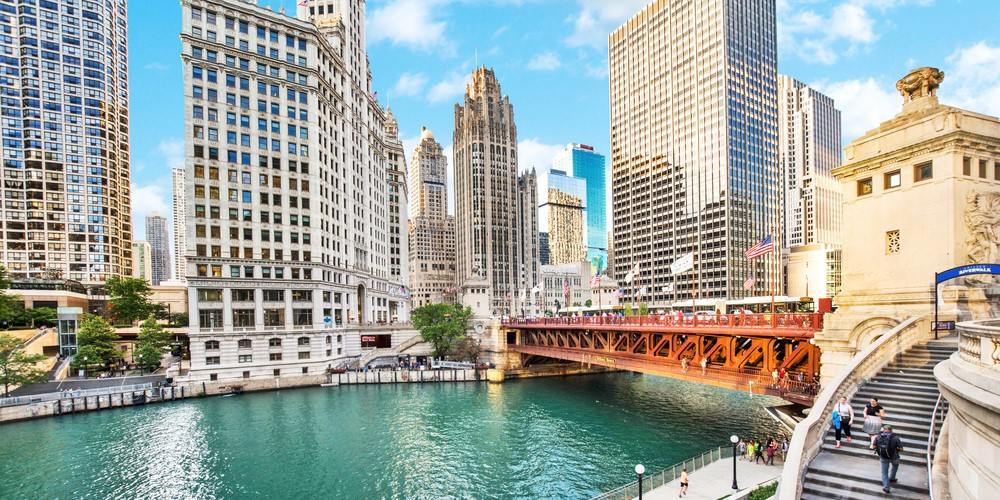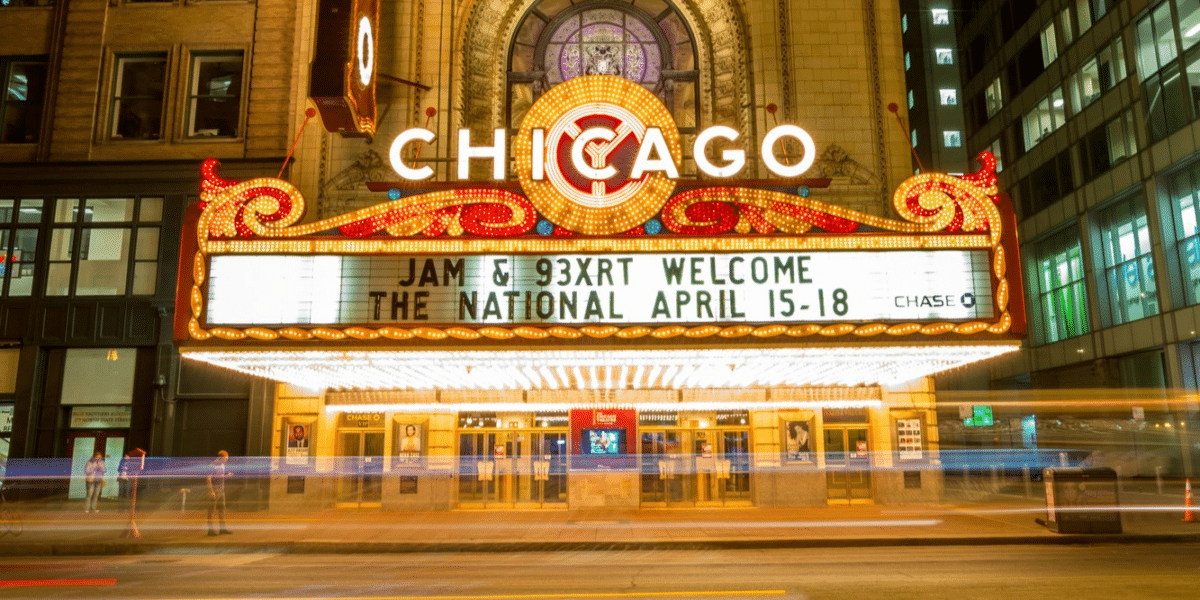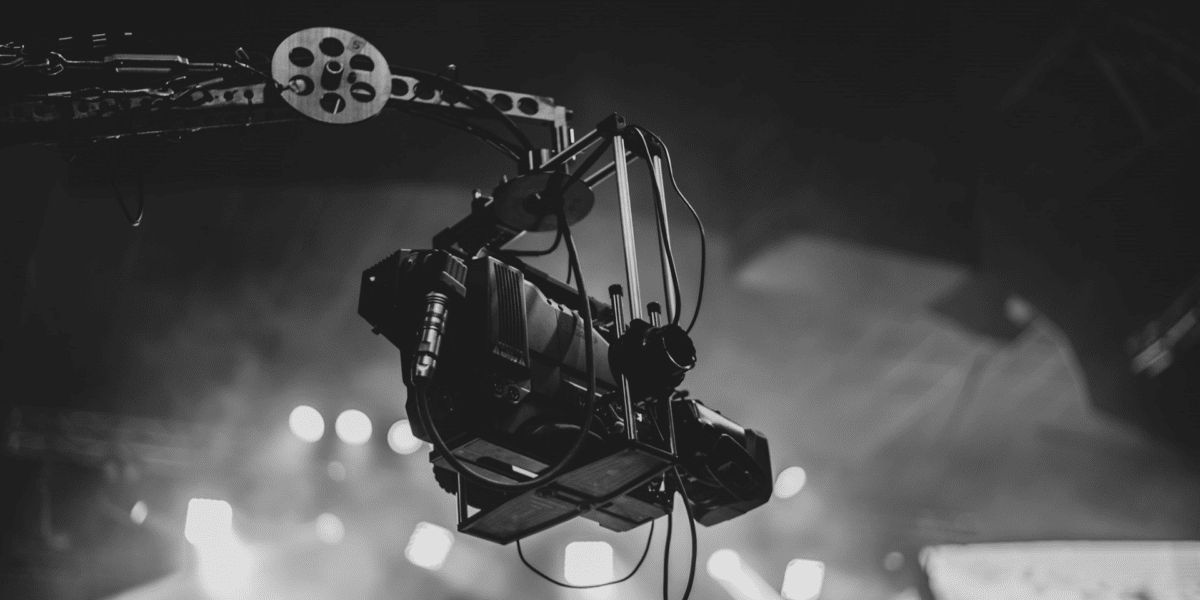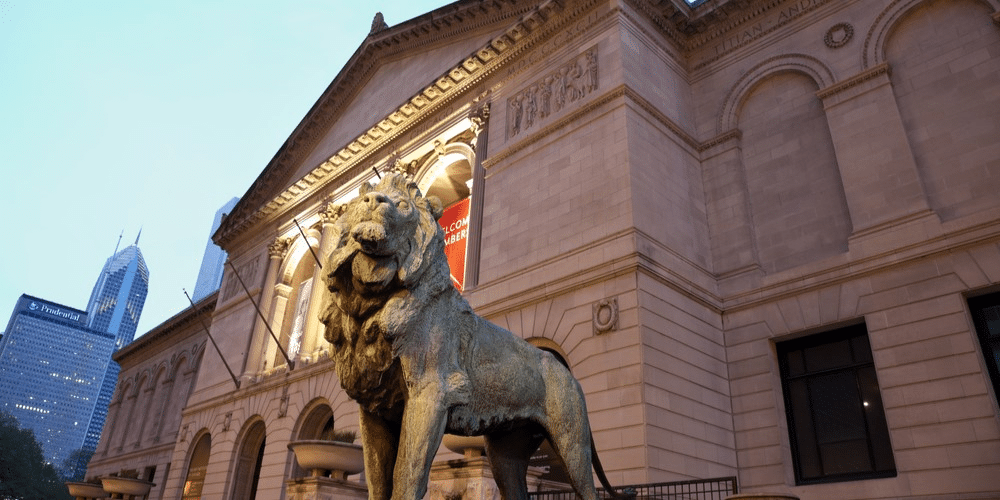Exploring Chicago: A Guide to Its Iconic Attractions
Image Commercially Licensed From: DepositPhotos
Sears Tower: Soaring Heights and Breathtaking Views
The Sears Tower, now known as the Willis Tower, remains a pinnacle of Chicago’s skyline. While it may have lost its title as the world’s tallest building, it continues to captivate visitors with its 108 stories. The Skydeck on the 103rd floor offers unparalleled views of Lake Michigan and beyond. Visitors can experience the thrill of the building swaying on windy days, making it a must-visit for those seeking a unique perspective of the city.
Magnificent Mile: Shopping Extravaganza and Architectural Marvels
The Magnificent Mile is a world-renowned shopping district stretching from Oak Street to the Chicago River. Named by real estate magnate Arthur Rubloff, this iconic avenue offers unparalleled shopping experiences and access to landmarks like the Museum of Contemporary Art, the Wrigley Building, and the Chicago Water Tower.
Navy Pier: Lakeside Fun for the Whole Family
Built in 1916, the Navy Pier is Chicago’s lakeshore playground, featuring gardens, restaurants, and attractions. With a Ferris wheel, carousel, and IMAX theater, it’s an ideal destination for families. The Children’s Museum and the Smith Museum of Stained Glass Windows add to the Pier’s allure, making it a diverse and entertaining destination.
Millennium Park: Modern Elegance Amidst Green Spaces
Millennium Park has become a symbol of modern elegance in Chicago despite initial delays. Boasting open spaces, modern sculptures, and the iconic Cloud Gate (The Bean), the park offers a refreshing escape. The Frank Gehry-designed Pritzker Pavilion hosts outdoor concerts, while an ice rink transforms into an open-air restaurant, providing year-round attractions.
Chicago River: Engineering Marvel and Scenic Waterfront
The Chicago River, altered in 1900 to reverse its flow, is a defining feature of the city. The Riverwalk along the south bank offers a picturesque stroll, complemented by river cruises providing historical insights into celebrated landmarks. This mile-long pedestrian path showcases Chicago’s commitment to engineering innovation and creating lush green spaces for residents and visitors.
John Hancock Center: Sky-High Panoramas and Architectural Marvels
Standing at 344 meters, the John Hancock Center offers panoramic views of Chicago from its 94th-floor Observatory. Completed in 1968, it boasts records like the world’s highest indoor swimming pool and ice-skating rink. Visitors can enjoy a cocktail on the 96th floor while enjoying the breathtaking cityscape.
Chicago Water Tower: Resilience in Limestone
Designed by William Boyington, the Chicago Water Tower is a testament to the city’s resilience after the Great Chicago Fire. The 47-meter tall structure now houses the City Gallery, showcasing local artists and photographers. A surviving relic, it connects the city’s past to its vibrant artistic present.
Buckingham Fountain: Beaux Arts Grandeur in Grant Park
The Buckingham Fountain is a grand Beaux Arts-style attraction in Grant Park. Designed by architect Edward Bennett, it features water-spouting sea horse statues representing the states around Lake Michigan. Donated by Kate Sturges Buckingham, it stands as a memorial and a testament to the city’s cultural richness.
Field Museum of Natural History: A Journey Through Time
Originating from the 1893 World’s Fair, the Field Museum has evolved into a treasure trove of natural history artifacts. It is located in Grant Park and showcases exhibits ranging from taxidermy collections to Native American artifacts. The iconic 12-meter-long Tyrannosaurus skeleton named “Sue” remains a favorite among the millions of specimens on display.
Shedd Aquarium: Marine Wonders on the Lakefront
Sharing the Museum Campus with the Field Museum, the Shedd Aquarium is a captivating destination housing over 1,500 species. From colorful fish to dolphins and beluga whales, it offers immersive exhibits like the “Caribbean Reef” and the award-winning “Amazon Rising.” A favorite among locals and visitors, the Shedd Aquarium promises a delightful experience with its diverse aquatic wonders.
Adler Planetarium: A Celestial Journey in the City
For astronomy enthusiasts, the Adler Planetarium is a celestial haven. It provides an enriching experience for anyone intrigued by the history and future of space travel. The Grainger Sky Theater offers immersive light shows, transporting visitors to planets, stars, and solar systems, making it a must-visit for those with a fascination for the cosmos.
Chicago River Boat Architecture Tours: Navigating History and Innovation
Like the Willis Tower Skydeck, Chicago River Boat Architecture Tours offer a comprehensive exploration of the city’s architectural highlights. Led by guides knowledgeable in architecture, these tours provide insights into Chicago’s unique and historic buildings. A blend of education and scenic beauty, these tours showcase the city’s innovative architectural pursuits and the minds behind them.
Chicago’s Attractions May Be Overhyped, but the City’s Charm Is Undeniable
While praising Chicago’s iconic attractions, it’s essential to acknowledge that the city’s charm goes beyond these landmarks. While these attractions are undoubtedly remarkable, exploring the local neighborhoods, trying diverse cuisines, and engaging with the vibrant community reveal the true essence of Chicago. The city’s allure extends beyond its famous landmarks, offering a rich tapestry of culture, history, and everyday life.
Summarizing the Chicago Experience
Chicago, the Windy City, is a testament to American resilience and ingenuity. From the iconic Willis Tower to the Magnificent Mile’s cultural richness and Millennium Park’s serene beauty, every corner of the city tells a unique story. Whether navigating the Chicago River, admiring the skyline from the John Hancock Center, or immersing oneself in the wonders of the Shedd Aquarium, visitors are bound to be captivated by the diverse tapestry of experiences this city offers. Chicago’s attractions, each with its own distinctive charm, collectively contribute to an unforgettable journey through the heart of the American Midwest.










